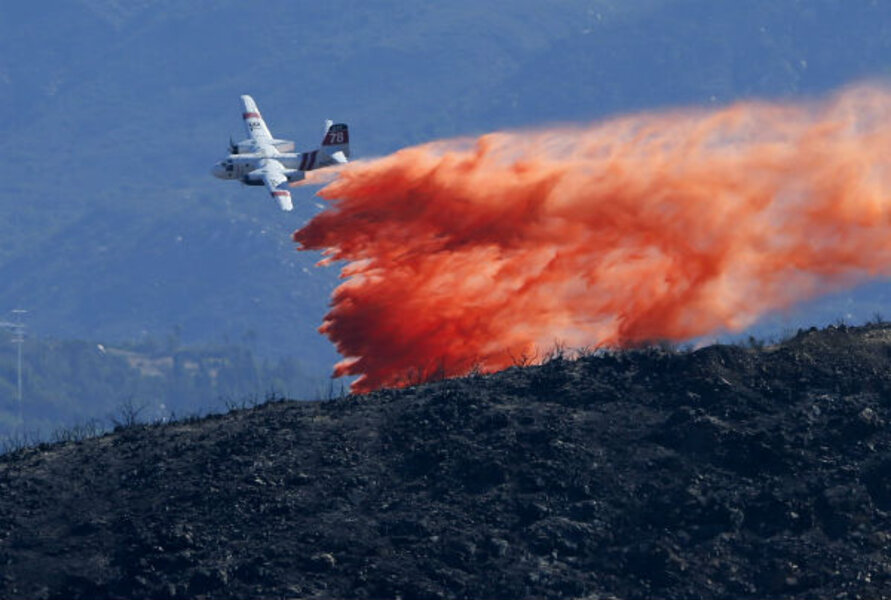Firefighters have enlisted aircraft to combat wildfires since the 1950s, when fire services drafted agricultural sprayers to drop large volumes of water onto forest fires. Today, fire agencies have entire fleets of aircraft specially designed to aid in firefighting. California's Department of Forestry and Fire Protection (CAL FIRE) has more than 50 aircraft in its aerial firefighting arsenal.
These aircraft do not actually extinguish fires, but rather cool an area enough so that ground crews can get to work putting out the blaze.
- Land-based air tankers carry specially formulated flame-retardant chemicals onto forest fires.
- Helitacks, helicopters designed to deliver fire resources, tow buckets filled with water and transport fire personnel into strategic locations within a forest fire.
- Scoopers can fly low over nearby lakes and rivers and scoop up large volumes of water to dump onto flames.








